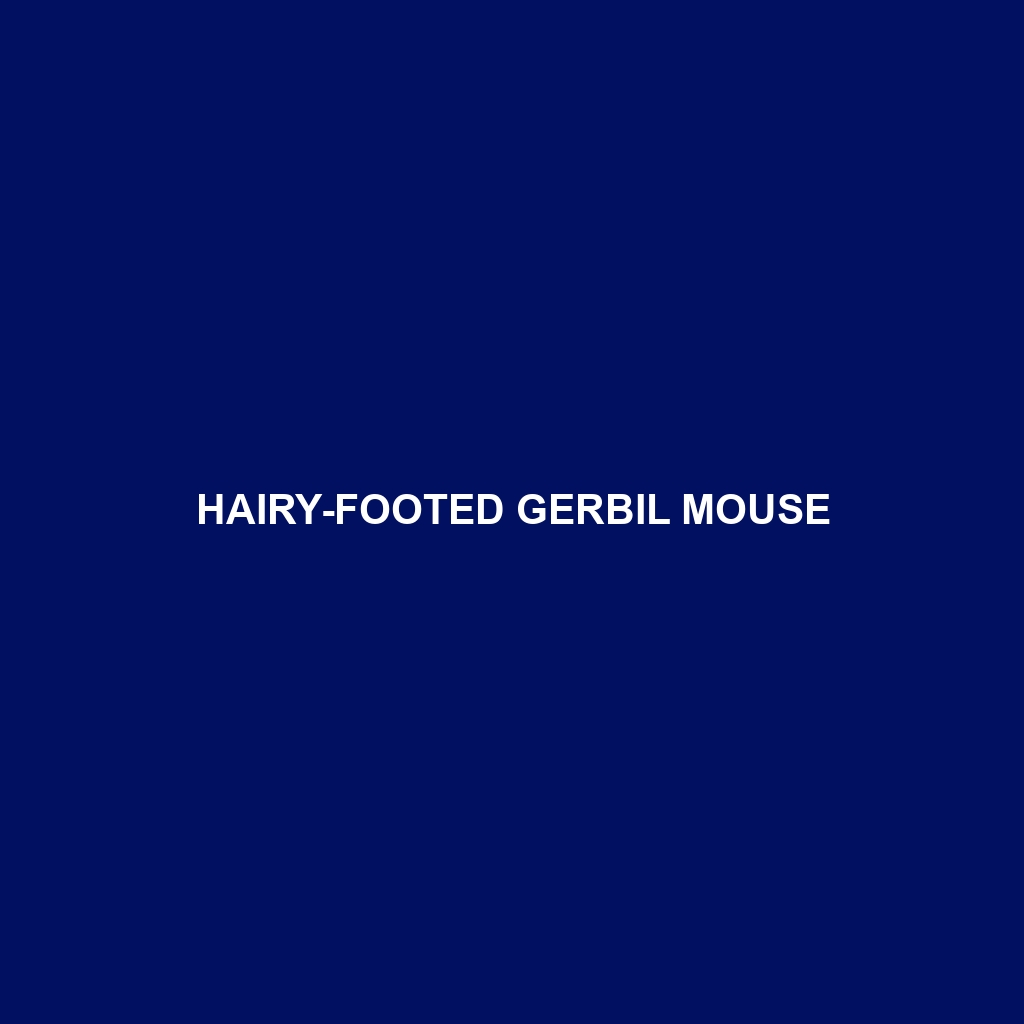Hairy-footed Gerbil Mouse
Common Name: Hairy-footed Gerbil Mouse
Scientific Name:
Habitat
The Hairy-footed Gerbil Mouse is primarily found in arid and semi-arid regions of North Africa, particularly in sandy and rocky habitats. Its preferred environments include deserts, grasslands, and scrublands where it can easily dig burrows and find shelter from predators.
Physical Characteristics
This species is characterized by its small size, usually measuring around 10 to 13 centimeters in body length, with a tail that can add another 8 to 10 centimeters. The Hairy-footed Gerbil Mouse exhibits a soft, fur-like coat that ranges from sandy brown to gray, providing excellent camouflage against its natural surroundings. Notably, it has distinctive hairy feet that help it navigate sandy terrains with ease.
Behavior
The Hairy-footed Gerbil Mouse is primarily nocturnal, exhibiting most of its activity during the cooler night hours. Known for its burrowing behavior, it digs intricate tunnel systems where it lives and stores food. Social interactions can be observed during the breeding season, but it also exhibits solitary tendencies throughout much of the year.
Diet
This gerbil mouse primarily feeds on seeds, fruit, and vegetation. Its diet is supplemented with insects and small invertebrates, particularly during breeding seasons when protein intake is crucial. The Hairy-footed Gerbil Mouse has adapted well to its environment, often foraging for food in the early morning and late evening.
Reproduction
The Hairy-footed Gerbil Mouse breeds year-round, with peak seasons occurring during the spring and summer months. Females typically give birth to 2 to 6 offspring after a gestation period of about 21 to 28 days. The young are born blind and helpless, relying entirely on their mother for nourishment and protection.
Conservation Status
Currently, the Hairy-footed Gerbil Mouse faces threats from habitat loss and environmental changes but is not classified as endangered. It is considered to have a stable population in its natural habitat, although specific local populations may be vulnerable to anthropogenic pressures.
Interesting Facts
One fascinating aspect of the Hairy-footed Gerbil Mouse is its incredible ability to survive in harsh desert conditions, relying on its burrowing skills to escape extreme temperatures. Additionally, its social structure allows for interesting interactions among members of its species during the breeding season, making it a unique subject of study for behavioral ecologists.
Role in Ecosystem
In its ecosystem, the Hairy-footed Gerbil Mouse plays a vital role as both a herbivore and prey species. By consuming seeds and plants, it helps to control vegetation growth, which in turn supports the other fauna in the environment. Furthermore, it serves as a food source for various predators, contributing to the balance of the desert and grassland ecosystems.
This structured and SEO-optimized description efficiently covers all aspects of the Hairy-footed Gerbil Mouse, making it informative and accessible for readers and search engines alike.
